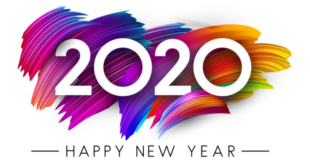If you enjoy nature, especially from any hunt, I’m sure you’d like to know which are the best binoculars. No matter what you hunt, it can be rabbits, deer or ducks (or even binoducks … haha), you should know what to look for when looking for binoculars.

We want the choice to be easier for you, so we hope the information we’ve put together below will help you decide. The best selling hunting binoculars you should know
With so many different types of binoculars and their many properties to analyze, where do you start?
Nikon 7295 Monarch ATB 10×42 Binoculars
Bushnell Legend Ultra HD 10×42 Binoculars
Vortex Diamondback 10×42 Binoculars
Vanguard Sprit ED 10×42 Binoculars
Well, we decided to make two separate binocular groups, which are the top seller series and the high-end series.
We did that because the type of hunting binoculars you want is controlled by the type of hunter you might be. We analyze the two binocular groups and think that we have found the best four of each group.
At the end of our analysis, we believe that Bushnell Legend Ultra HD 10x 42mm Binocs should be considered very well in your decision.
There are external factors that you should consider outside of the features listed in the previous table. We always recommend that you read product reviews on Amazon.
Professional hunting binoculars for hunters hardcore
There are many binoculars that fall into this support, so we have selected the 4 following binoculars to cover a larger area. I’m sure the quality and features of these binoculars will impress you.
The combination of adding electronic components to the binoculars seems to be where the industry leads and the technology is great if you can afford it.
Minox HG 10×43 Binoculars
Leica Geovid HD-B Rangefinder 10×42 Binoculars
Swarovski Optik EL Swarovision 10×42 Binoculars
Vortex Optics Viper HD 10×42 Binoculars
If you have money, look at the Binoculars LEICA Geovid HD-B 10 × 42 Laser Rangefinder (40049), because Leica has really intensified the game.
Leica are the pioneers of the commercial Rangfinder and have combined their ABC technology in these binoculars.
Not only do these binoculars have the most powerful search capabilities in their class in 2000yrs, but you can also use a Micro SD card in the battery compartment (waterproof of course) and upload your own precise ballistic information, completely custom and specific to the configuration of its use. They have also been awarded the “Innovation of the Year” by Fernglas.com
What to look out for when choosing your best binoculars for hunting
In most cases the prey will be more active at dawn and dusk. To watch the game at these crucial times, you’ll need a hunting binocular that delivers great performance in low light conditions.
When selecting binoculars with a lens specification of 42 mm to 50 mm you can enjoy excellent performance with optimal hunting times.
Increase:
Enlargement must also be an important consideration. If you’re looking for 10x magnification, you’ll get the level of detail you really need. Do not go beyond that because binoculars with higher magnifications can hinder the stabilization of images.
If you are the hunter who varies the terrain frequently, you will find that choosing 10x makes sense, as it is believed to provide “full” benefits in a variety of outdoor environments. However, higher rates of increase, such as 14x to 19x, may work well for those who hunt mainly in dense forest areas.
field of view:
You can also select binoculars with a larger field of view, measured in feet per 1000 yards. In general, increases of 8x to 12x provide sufficient field of view for hunting purposes.
Multi-layer lens:
It will be wise to choose multi-layer hunting binoculars because they provide superior contrast, brightness and clarity.
Permanent case:
To withstand the passage of time (and to perform even under the harshest weather conditions), hunting binoculars have to be extremely durable. The search for binoculars equipped with waterproof components and anti-fog lenses makes it possible to enjoy a lasting performance regardless of the weather.
height and weight:
Think about how big your hunting binoculars should be. Sometimes choosing the right size is as easy as looking at one’s own hands. In other words, when your hands are small, you can feel more comfortable with compact designs. If you have bigger hands, you’ll find that larger devices fit perfectly.
There are different sizes of hunting binoculars that have different weights. In search of lightweight designs, you can enjoy more hunting comfort.
Relief of the eye:
If you wear glasses, eye ventilation is an important factor for you. If the eye relief is too short and you are wearing glasses, you can only see the center of the image on the binoculars. With a long eye relief you see the whole picture. Basically, when binoculars are made, everyone has an ideal distance from the eyepiece.
Twilight factor:
The Penumbra factor is worth considering when buying binoculars for hunting. The twilight factor is the calculation to determine how binoculars work in low light. Although it is good to consider the twilight factor, you should not only rely on it when examining the image quality of binoculars.
In the past, the twilight factor may have been more important, but with the high quality lens coatings available today, the twilight factor may not be that important.
Exit pupil:
The exit pupil is the small circle of light seen through a pair of binoculars while the binoculars are kept away from the face.
The simple formula for calculating the exit pupil for your binoculars is: exit pupil = enlargement of the diameter of the lens ÷.
For example, if your binoculars are 8 × 42, that means that the diameter of the lens is 42 mm and the binoculars will produce 8 magnifications compared to the naked eye. Then the calculation of the exit pupil would be 42 ÷ 8 = 5.3 mm.
The exit pupil value indicates the brightness of the image that you are looking through the binoculars.
ED glass:
Extra-low-dispersion or ED glass has different qualities, depending on how and what is used in the manufacture of lenses.
ED glass has been developed to reduce the difference in wavelength of light, known as chromatic aberration. If you look through a lens with chromatic aberration, you may notice a “blurry” effect around the edge of your viewing subject, called a color stripe.
 PakSkills Anything About Entertainment, Technology, Lifestyle
PakSkills Anything About Entertainment, Technology, Lifestyle


